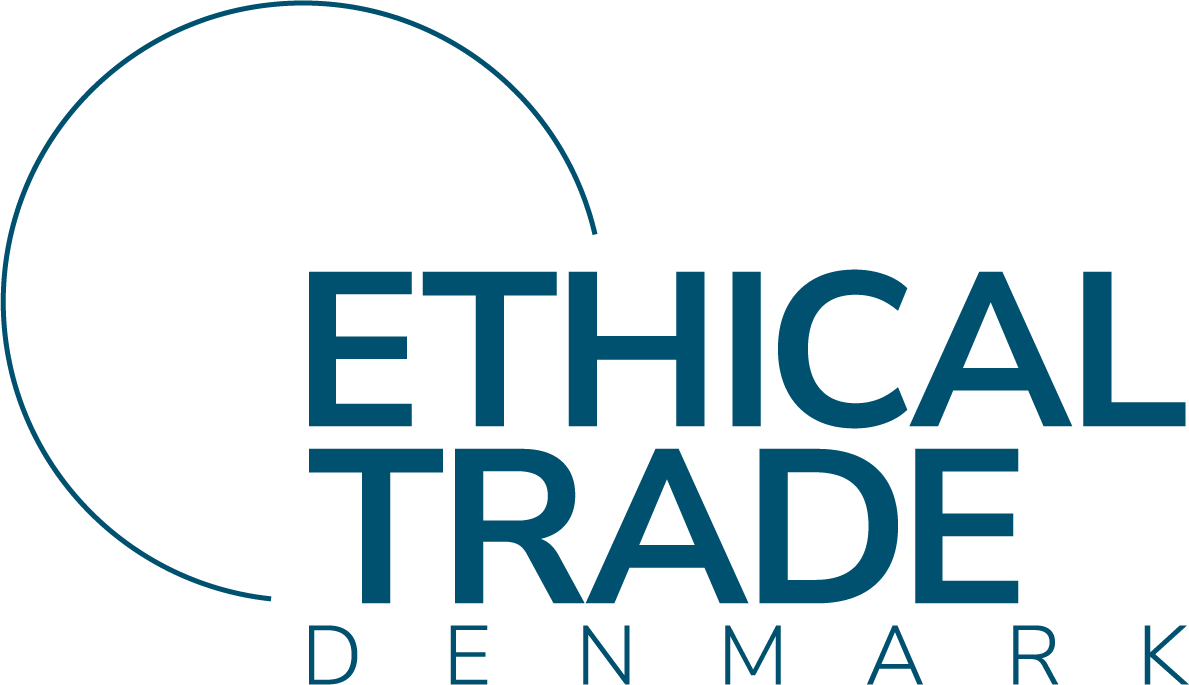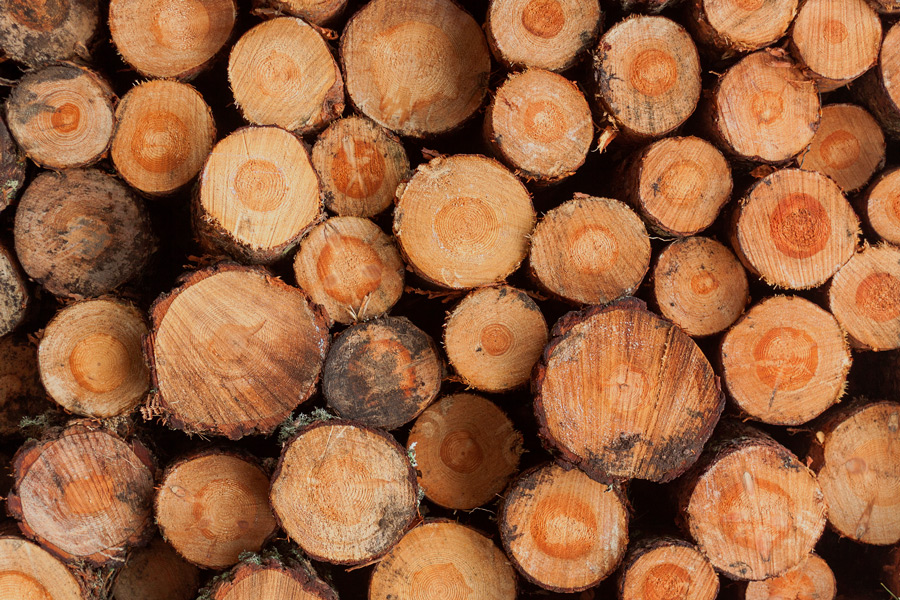Assess risk to people, environment and climate in your business operations

Prioritise and choose
Here you prioritise your efforts and choose areas of focus for your work. Setting priorities largely depends on assessing the degree of negative impact and how likely a given issue is to arise. For example, within occupational health and safety legislation, the most serious risks often receive the highest degree of attention even though they are not necessarily statistically likely to happen often.
Start here
According to international guidelines from UNGP and the OECD, among others, you should prioritise your areas of focus based on the following criteria for severity:
- Scale – how serious is the negative impact?
- Scope – how many people, species or how big an area is affected?
- Possibility of remediation – can the damage be repaired?
The risks that you consider to be the most serious must be dealt with first. Permanent damage or loss of human life are two examples.
Once you have set priorities based on severity, you can decide on sub-priorities based on probability. Here you must consider the likelihood that a negative impact will occur. However, it is important to emphasise that all companies should, of course, handle all risks – even those that end up in the yellow field in the matrix below.
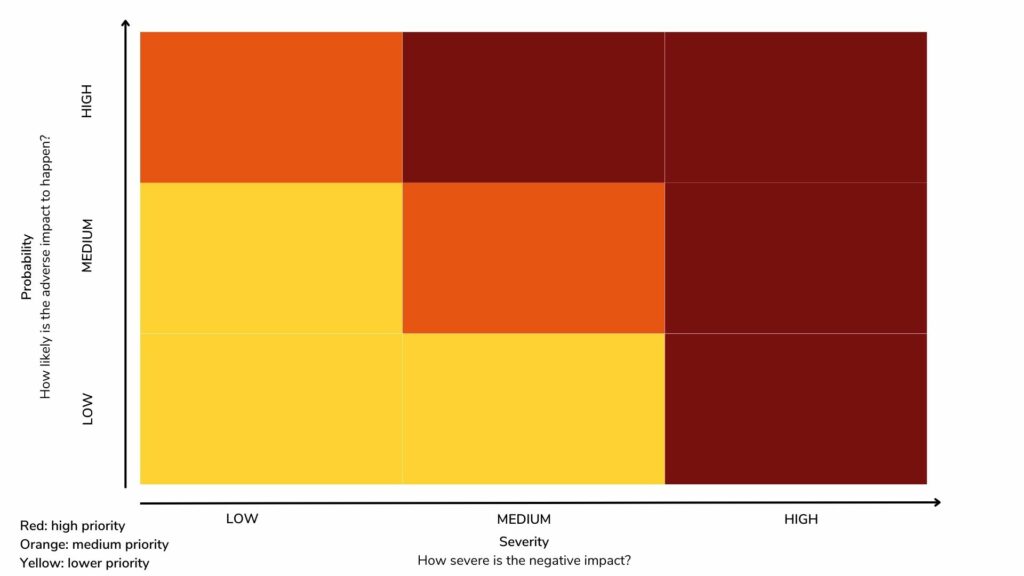
When you have prioritised based on severity and probability, you must consider how you and your company can use your influence. Influence can be exerted on many levels and in many contexts. Even a short conversation with suppliers and stakeholders can make a difference and be a positive first step in a joint effort.
If you are a small player in a larger market or you buy from a large supplier, working with other companies or joining an interest group may be a good idea.
Should priority be determined by volume or risk?
Companies with many different products in their range should prioritise according to where the risks are most serious – not by volume of products. The guidelines recommend prioritising based on both scale (type of impact) and scope (eg. how many people/endangered species are affected). Therefore, a priority may vary depending, for example, on the number of people who may be adversely affected.
If a company buys vanilla just a few times a year that does not mean related risks should not be prioritised. It’s about the risk to the people and environment involved in any value chain. Thus, considering what measures can be taken to lower the risk profile is still necessary.
Purchasing volume and the size of the contracts are relevant in the sense that more people can be negatively affected in the case of larger quantities. At the same time, volumes can be important in relation to influence and what actions can be taken by a purchasing company. But it is not relevant to prioritisation.
Who determines what is “severe”?
All kinds of human rights violations and negative environmental impacts are bad, and determining which violation or impact is the most egregious may be difficult. How do you prioritise between the risk of deforestation related to one product and lack of freedom of association related to another? You do not necessarily have the expertise to be able to assess either the scale, scope or the possibility of remediation, and it is important to remember that you do not have to make your priorities all by yourself.
By involving experts, organisations, and other relevant stakeholders in the very early stages, you can continuously have your assessments confirmed or refuted. Having your decisions validated in this process brings more peace of mind. Members of Ethical Trade Denmark can get in touch through the multi-stakeholder network and enter into a dialogue with trade union movements, civil society organisations, and others.
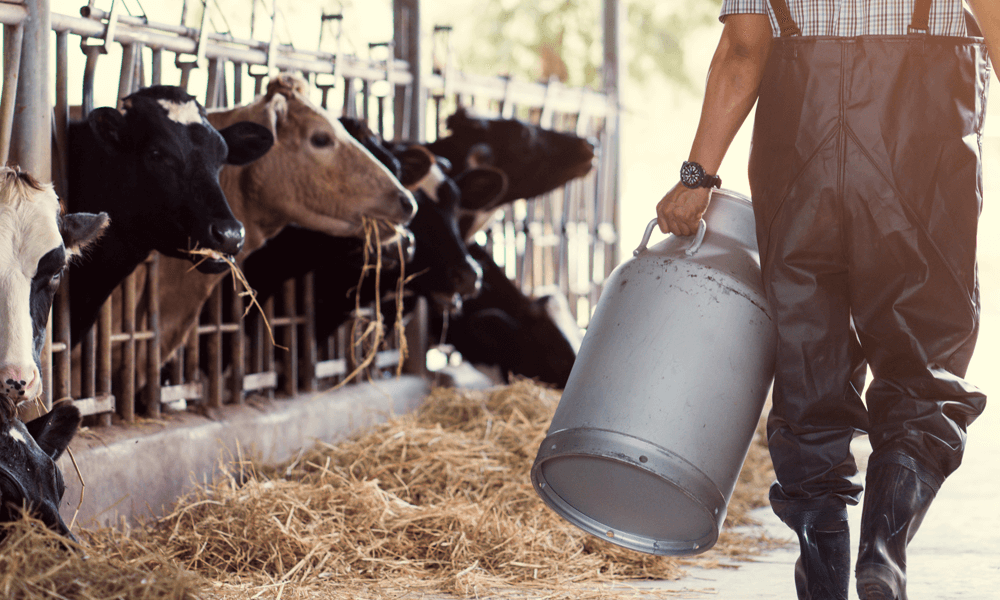
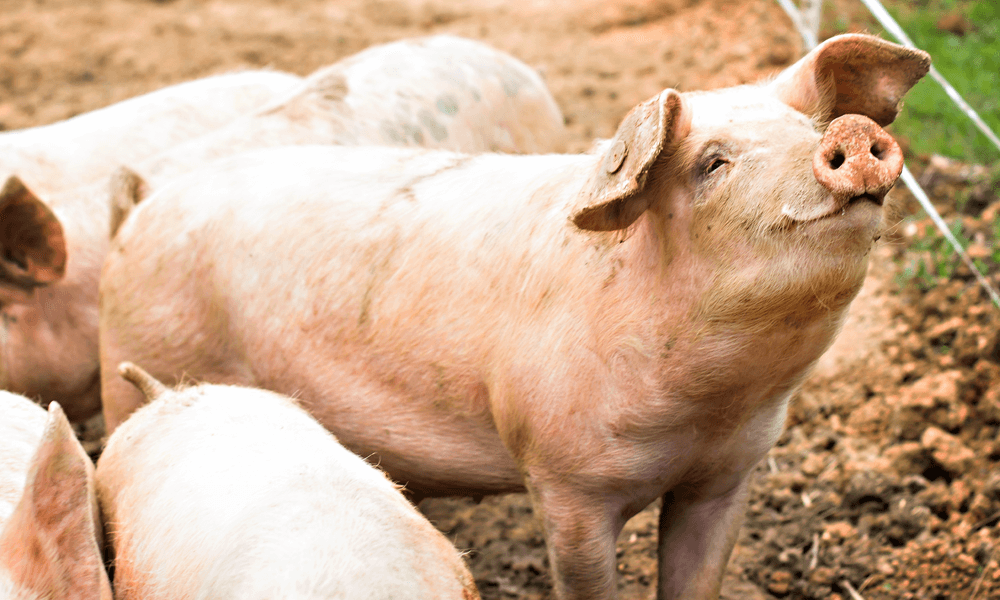
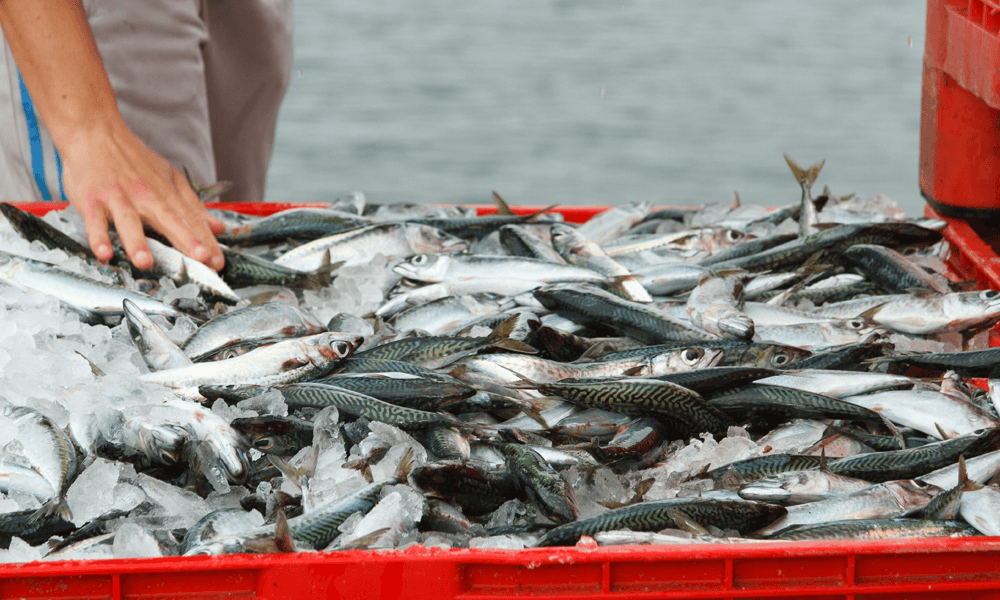
TOP TIP
Be sure to document your process and your priorities. Use a logbook, workshop notes or similar records.
Overview of tools
- Resource list
- Risk overview in selected sectors
- Visualisation tool – ask the right questions and map out the value chain
Be aware that these risk tools are very general. It is always necessary to process the information to suit your specific activities.
Case stories from small and medium-sized businesses
SKAGERAK: Concrete measurements provide valuable overview
Special risks in the production of millstones in Ethiopia
About this guide
This guide is aimed at small and medium-sized businesses - i.e. companies with 2 to 250 employees, across industries. Human rights due diligence is relevant whether you are in the B2C or B2B market, import, export or have your own production in Denmark.
The purpose of the guide is to help SMEs in their work with human rights, environmental and climate due diligence - regardless of company size and resources. The guide provides inspiration on where to start and how to strengthen your current processes.
The guide has been prepared by Ethical Trade Denmark. A first version of the guide - focused on human rights and targeted at the food cluster - was developed in collaboration with the Danish Agriculture & Food Council and Arla, co-financed by the Danish Business Authority.
The guide may not be modified, reproduced or translated without prior written agreement with Ethical Trade Denmark. The guide may only be used in educational contexts with clear credit to Ethical Trade Denmark, including a clear logo.
